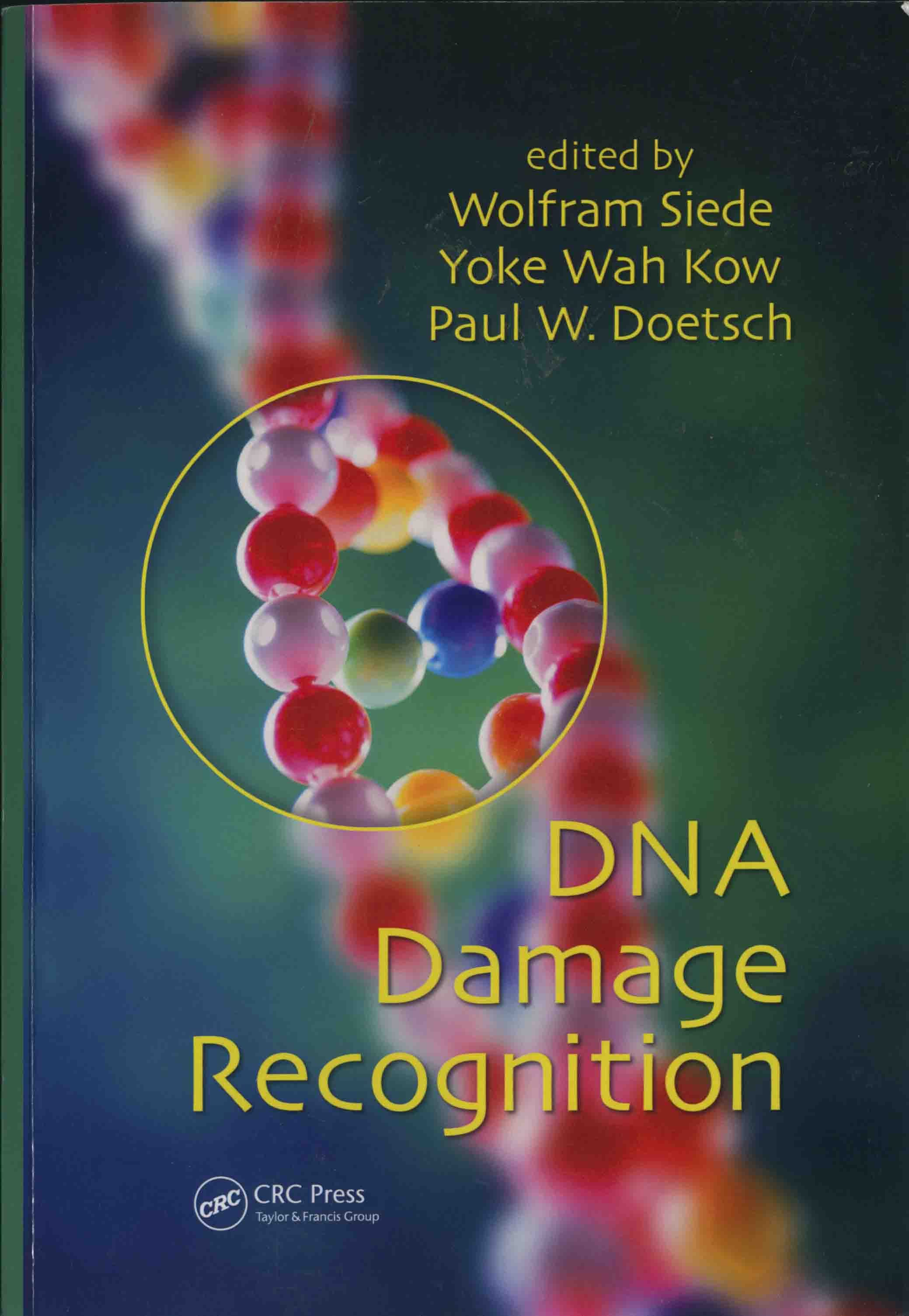 |
DNA damage recognition / edited by Wolfram Siede, Yoke Wah Kow, Paul W. Doetsch. -- Boca Raton, FL : CRC Press , 2006. – (58.174252 /D629z) |
Contents
Preface
iii
Contributors
xvii
PART I. MECHANISMS OF DAMAGE RECOGNITION:
THEORETICAL CONSIDERATIONS
1. Dynamics of DNA Damage Recognition
2. In Search of Damaged Bases
3. Increased Specificity and Efficiency of
Base Excision Repair Through Complex Formation
PART II. UV DAMAGE AND OTHER BULKY
DNA-ADDUCTS
4. Structure and Properties of DNA
Photoproducts
5. Damage Recognition by DNA Photolyases
6. Damage Recognition by the Bacterial
Nucleotide Excision Repair Machinery
7. Recognition of DNA Damage During
Eukaryotic Nucleotide Excision Repair
8. Interactions of the Transcription
Machinery with DNA Damage in Prokaryotes
9. DNA Repair in Actively Transcribed Genes
in Eukaryotic Cells 181
10. Chromatin Structure and the Repair of UV
Light-Induced DNA Damage 201
11. The Ultraviolet Damage Endonuclease
(UVDE) Protein and Alternative Excision Repair: A Highly Diverse System for
Damage Recognition and Processing 223
12. Structural Aspects of Pt-DNA Adduct
Recognition by Proteins 239
13. Structural Aspects of Polycyclic
Aromatic Carcinogen-Damaged DNA and Its Recognition by NER Proteins 263
PART III. NON-BULKY BASE DAMAGE 297
14. Structural Features of DNA Glycosylases
and AP Endonucleases 299
15. Repair of Oxidized Bases 323
16. Recognition of Alkylating Agent Damage
in DNA 339
17. Deaminated Bases in DNA 389
18. New Paradigms for DNA Base Excision
Repair in Mammals 403
19. Recognition and Repair of Abasic
Sites 421
20. Oxidative Mitochondrial DNA Damage
Resistance and Repair 445
PART IV. MISMATCH REPAIR 461
21. Mechanism of DNA Mismatch Repair from
Bacteria to Human 463
22. Interaction of the Escherichia coli Vsr
with DNA and Mismatch Repair Proteins
483
PART V. REPLICATION AND BYPASS OF DNA
LESIONS 493
23. Mechanism of Translesion DNA Synthesis
in Escherichia coli 495
24. Mechanism of Bypass Polymerases in
Eukaryotes
25. Structural Features of Bypass
Polymerases
26. Regulation of Damage Tolerance by the
RAD6 Pathway
PART VI. DNA STRAND BREAKS
27. Biochemical and Cellular Aspects of
Homologous Recombination
28. The Mechanism of Vertebrate
Nonhomologous DNA End Joining and Its Role in Immune System Gene
Rearrangements 609
29. Structural Aspects of Ku and the
DNA-Dependent Protein Kinase Complex 629
30. Cellular Functions of Mammalian DNA
Ligases 685
31. The Mrell/Rad50/Nbsl Complex 705
32. Histone γ-H2AX Involvement in DNA Double-Strand Break
Repair Pathways 723
33. DNA Strand-Break Recognition, Signaling,
and Resolution: The Role of Poly(ADP-Ribose) Polymerases-1 and -2 737
PART VII. PERCEPTION OF DNA DAMAGE FOR
INITIATING REGULATORY RESPONSES 755
34. Cellular and Molecular Responses to
Alkylation Damage in DNA 757
35. Damage Signals Triggering the
Escherichia coli SOS Response 781
36. Recognition of DNA Damage as the Initial
Step of Eukaryotic Checkpoint Arrest 803
37. Responses to Replication of DNA Damage
Index
841